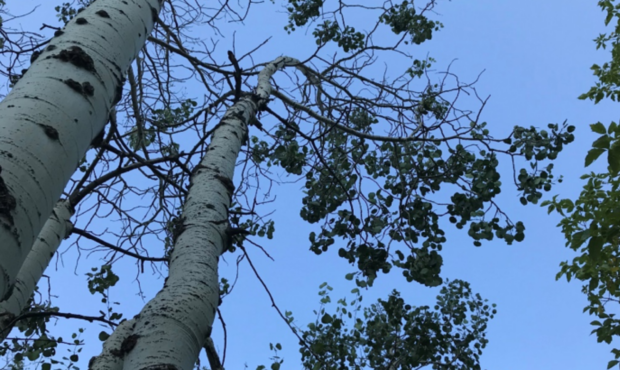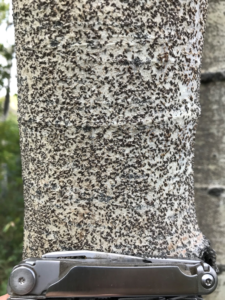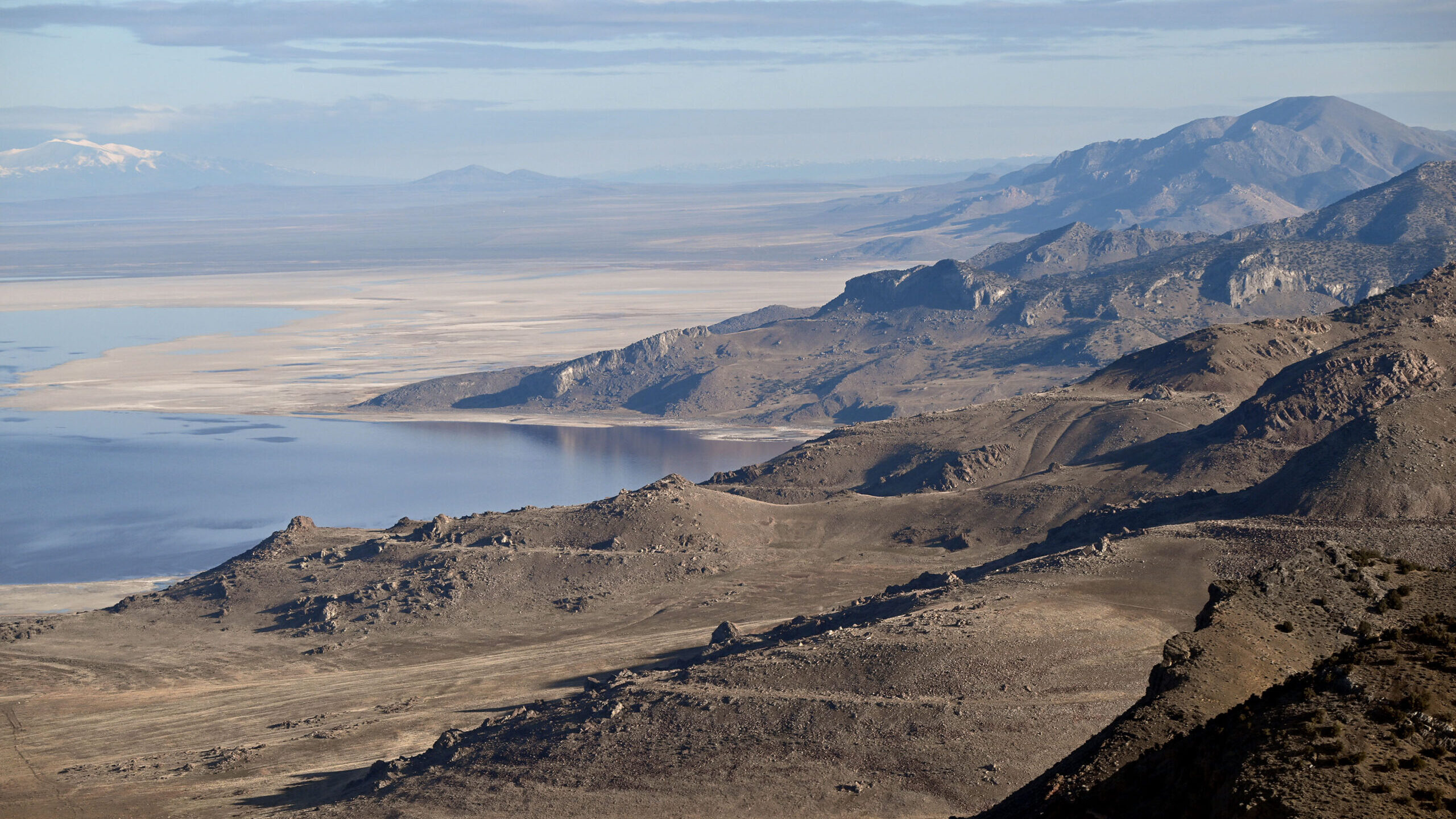USU Extension warns of invasive insect found in aspen trees east of Provo
Nov 11, 2021, 5:31 PM

An aspen tree in Arizona exhibits crown die back after being infested with oystershell scale. Photo credit: Justin Williams, USDA Forest Service
SALT LAKE CITY — An invasive insect has been identified in the area of the Uinta-Wasatch-Cache National Forest called Pole Canyon, east of Provo. And for the USDA Forest Service’s Forest Health Protection program, the find is alarming.

Oystershell scales cover the bark of an aspen tree in Arizona. Photo credit: Justin Williams, USDA Forest Service
“This pest is a significant threat to the health of our Utah forests, and management options for dealing with it are limited and need more research,” said Darren McAvoy, Utah State University Extension assistant professor of forestry.
Oystershell scales are immobile insects. According to Utah State University Extension, the insects are surrounded by a shell and feed on the sap just underneath the bark of aspen as well as ash, willow, cottonwood and box elder trees in Utah.
It is an invasive insect that can weaken and kill aspen trees. And while it has likely been affecting trees and shrubs in Utah for decades, USU Extension reports that it was only recently confirmed in the aspen trees of Pole Canyon.
Young trees, said McAvoy, are particularly susceptible to Oystershell scale. He also said that many Utah forests already lack younger aspen trees, which which are important to the health of a forest especially if there is a fire in the area.
“Oystershell scale is known to have killed large groups of native forest tree species in several eastern states,” said McAVoy. “(The insect) is currently causing significant damage to aspens in northern Arizona, where it has been active over the past decade, weakening and killing aspen trees below 8,200 feet in elevation.”
How you can help thwart this invasive insect
There are two ways to help. The insects are usually seen on the shady side of a tree and on branches and not in direct sunlight. If you happen to see the oystershale scale insect on a tree, note your GPS location, take a picture, and email the information to Justin Williams, USDA Forest Service, Forest Health Protection Ogden Field Office. The address is justin.williams3@usda.gov.
Also, McAvoy said that it’s important not to take firewood into a forest if it is infected with Oystershell scale.













